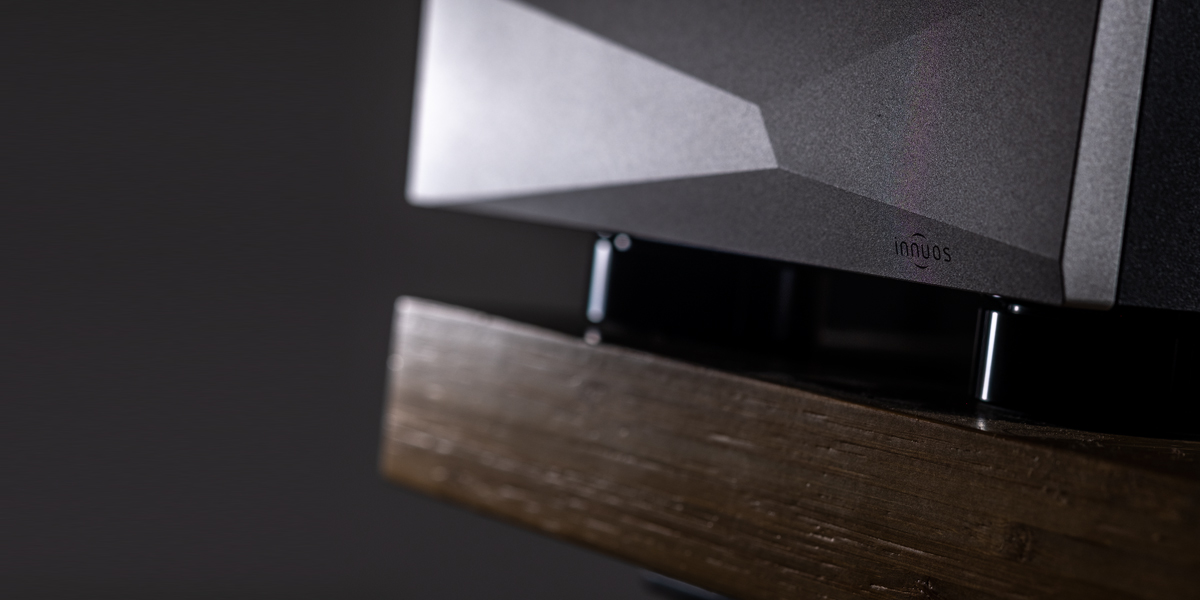Innuos PhoenixUSB reviewed at this site in July 2020 was awarded with our Victor badge. Two springs later its network sibling Innuos PhoenixNET was sent my way. Now it’s time to tell its story. Enjoy!
The wall
Computer audio is quite straightforward if not inviting early on, so everyone can manage with minimal effort. Since music playback from a PC or laptop isn’t a resource-intense task, even a very old machine will suffice. Then install Foobar2000, Audirvana, HQ Player or Roon on it and stick to the software that works best for you. That alone can already make a noticeable difference and most people will stop there. If you’re a curious type with a knack for tweaking OS however, you can learn how to strip it from all non-mandatory processes, modify its BIOS and see what happens then. If past that point you’re happy about results and still keen to press on, then the hardware chapter awaits you. There you’ll learn about dedicated USB cards, linear power supplies for them, industry-grade CPUs, memory, motherboards, passive fanless cooling based on heat pipes connected to enormous milled radiator blocks, low-profile aluminium enclosures and many more. My point is that the deeper into this subject you go, the more its complex layers you’ll discover. If you lack time, resources and inner geek to walk that walk, the Portuguese company Innuos already did that to the very end and beyond. Reliable turnkey music servers are the specialty of this audio house and the backbone of its roster. Over the years these products secured the company’s position within the audio biz and resulted in quite the street cred. I thought that its founders may want to eventually branch out into DACs, amps or speakers, but their approach proved more methodical if not surgical. They’ve been mainly focusing on improving, expanding and supporting products they already have. The company’s own InnuOS2.0 software platform and Sense app for it was released for free in 2021. An optional higher-tiered next-gen PSU for the reference Innuos Statement model emerged in 2022. Two new media players named PULSEmini and PULSE had their debut the same year. On top of that there’s also PhoenixUSB reclocker and PhoenixNET network switch, so products designed to complement core products. The former is the very best in its class I’d heard to date, so when the opportunity to spend some time with the latter revealed itself I was on board.
If you lack time, resources and inner geek to walk that walk, the Portuguese company Innuos already did that to the very end and beyond. Reliable turnkey music servers are the specialty of this audio house and the backbone of its roster. Over the years these products secured the company’s position within the audio biz and resulted in quite the street cred. I thought that its founders may want to eventually branch out into DACs, amps or speakers, but their approach proved more methodical if not surgical. They’ve been mainly focusing on improving, expanding and supporting products they already have. The company’s own InnuOS2.0 software platform and Sense app for it was released for free in 2021. An optional higher-tiered next-gen PSU for the reference Innuos Statement model emerged in 2022. Two new media players named PULSEmini and PULSE had their debut the same year. On top of that there’s also PhoenixUSB reclocker and PhoenixNET network switch, so products designed to complement core products. The former is the very best in its class I’d heard to date, so when the opportunity to spend some time with the latter revealed itself I was on board.
Foamy liners inside a double cardboard box stored the key ingredient wrapped in a cloth bag. These protective inserts also had several openings to accommodate a regular mains throwaway, brief guide and one 2m Ethernet cable. Since the product itself is a self-explanatory device that doesn’t have any special needs to get going, nothing above the listed accessories was needed. Innuos PhoenixNET measures (W x H x D) 215 x 87 x 342mm and weighs just 5kg, so is very much alike its USB cousin and quite the giant given its role. Most network switches are compact boxes after all. My daily driver Fidelizer EtherStream looked innocent in comparison. This report’s subject incorporates EMI/RFI-proof chassis similar to robust visually appealing enclosures we’ve already seen in Innuos PhoenixUSB, ZENmini Mk2 server/streamer and ZENmini linear PSU for it. The company’s uniform dress code across the entire roster surely makes its residents coherent lookers and most likely generates some savings here and there. I see nothing wrong with that. Innuos PhoenixNET’s thick massive CNC-milled front panel comprises several differently angled planes, aligned to net modern instantly recognizable aesthetic. The manufacturer’s petite logo near the bottom right corner is the only feature on that surface. The product’s forehead is free from any ports, buttons, LEDs and knobs simply because this plug&play affair doesn’t need any of that. Its U-shaped steel sheet seamlessly connects clean cheeks and top busy with a triangle of small round openings to dissipate heat. The view’s quite nice and the machine runs very cool. A dampening pad just underneath the bonnet tames vibrations and makes the entire enclosure acoustically dead upon knocking.
Innuos PhoenixNET’s thick massive CNC-milled front panel comprises several differently angled planes, aligned to net modern instantly recognizable aesthetic. The manufacturer’s petite logo near the bottom right corner is the only feature on that surface. The product’s forehead is free from any ports, buttons, LEDs and knobs simply because this plug&play affair doesn’t need any of that. Its U-shaped steel sheet seamlessly connects clean cheeks and top busy with a triangle of small round openings to dissipate heat. The view’s quite nice and the machine runs very cool. A dampening pad just underneath the bonnet tames vibrations and makes the entire enclosure acoustically dead upon knocking.
Each of the three large aluminium anti-vibration pucks installed on the PhoenixNET’s underbelly incorporates a rubber O-ring and large inner spring. These soft mechanical decouplers tuned to the resonant frequency of the chassis were already field-tested i.e. in its Statement and PhoenixUSB stablemates. On the back we see a fused IEC inlet with the main on/off switch and four protruding Amphenol RJ45 ports (3x in, 1x out). These fully shielded sockets make surprisingly firm contact with Ethernet plugs and their usual green LEDs are permanently turned off to limit incoming noise. Silicone grommets between sockets and enclosure reduce it even more. Many people will deem these means insignificant, but Innuos engineers consider them just as important as everything else. Small things ad up and that’s what makes a big difference later on.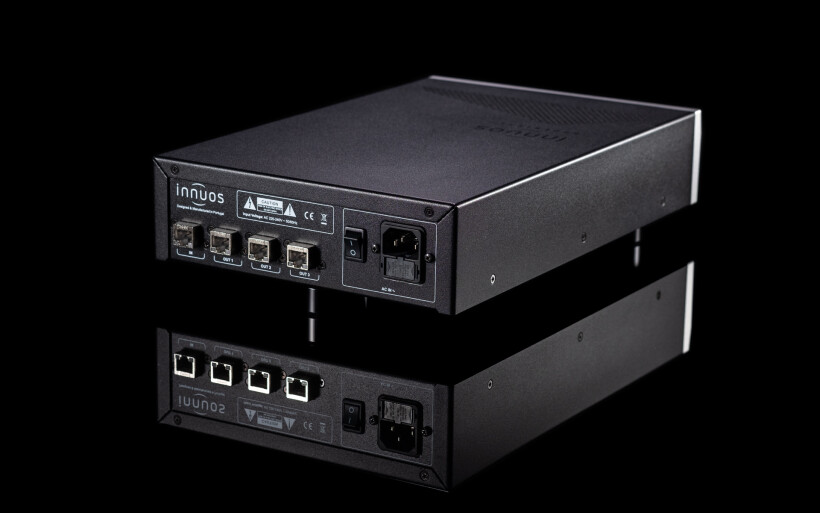 Innuos PhoenixNET goes between your router and streamer, so needs only two Ethernet cables and one power cord to work. Upon connecting everything just flip its rear on/off rocker switch and you’re set. Here it should be said that the subject of using network switches to improve audio playback is polarizing to say the least. Network engineers see no reason why such devices should be able to do that. Several years back I would’ve agreed. Back then I couldn’t fathom how a device used as a part of a control scheme outside the audio chain can have any impact on sound. Now I think that a network switch acts as a barrier for pollution that pours into a streamer from a noisy router. The way I see it, this is its fundamental role that yields audible benefits. Transmission speeds or 0s and 1s arriving orderly and on time are nowhere near as relevant as suppressing ingress noise before it hits the hardware downstream.
Innuos PhoenixNET goes between your router and streamer, so needs only two Ethernet cables and one power cord to work. Upon connecting everything just flip its rear on/off rocker switch and you’re set. Here it should be said that the subject of using network switches to improve audio playback is polarizing to say the least. Network engineers see no reason why such devices should be able to do that. Several years back I would’ve agreed. Back then I couldn’t fathom how a device used as a part of a control scheme outside the audio chain can have any impact on sound. Now I think that a network switch acts as a barrier for pollution that pours into a streamer from a noisy router. The way I see it, this is its fundamental role that yields audible benefits. Transmission speeds or 0s and 1s arriving orderly and on time are nowhere near as relevant as suppressing ingress noise before it hits the hardware downstream.
If a network switch blocks noise from further travels, it can’t inject its own. Innuos PhoenixNET is very particular about that both externally and internally. Most such products rely on donor boards, while this design incorporates a motherboard developed from scratch by its makers. Each RJ45 socket has its own isolation transformer. Innuos’ network switch chip of choice is a low-noise 100Mbit type that discards its in-built voltage regulators in favor of three external Analog Devices LT3045 regs. This silicon directly connects to a large 3ppb 25MHz OCXO clock mere millimeters away to secure maximum precision and reduce jitter. That oscillator needs about an hour to fully stabilize its temperature, so having PhoenixNET permanently engaged is a good idea. The power supply section designed by Dr. Sean Jacobs features his CX module meant to reduce DC hum by a factor of 1’000 as we learn from this review published at 6moons.com. Both the clock and network chip get their own regulation blocks and voltage rails. Large toroidal transformers, Mundorf caps, multiple anti-vibration measures and short clean connections on top of all else form quite the package. Now let’s find out what use today’s loaner makes of it.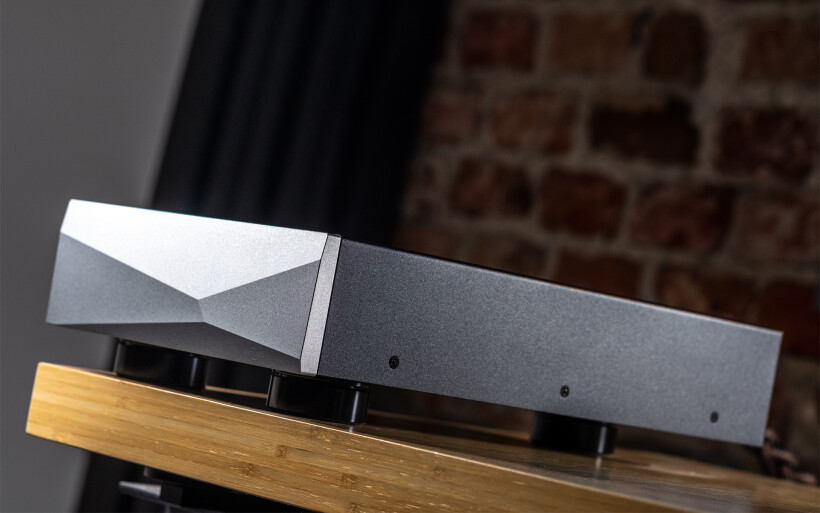 Naturally the PhoenixNET had to fight with the Fidelizer EtherStream I’ve been using since mid 2020. Each connected to the Linksys WRT160N’s LAN output via a 1.0m Ethernet throwaway cable, while the Innuos Statement’s LAN out accommodated its own network leash that moved between the two switches as many times as it was necessary. Reconnecting that one RJ45 cord was the only thing I had to do to get sound. There was no need to power on/off any of my platform’s usual residents. Lucky me, audio comparisons rarely are this convenient.
Naturally the PhoenixNET had to fight with the Fidelizer EtherStream I’ve been using since mid 2020. Each connected to the Linksys WRT160N’s LAN output via a 1.0m Ethernet throwaway cable, while the Innuos Statement’s LAN out accommodated its own network leash that moved between the two switches as many times as it was necessary. Reconnecting that one RJ45 cord was the only thing I had to do to get sound. There was no need to power on/off any of my platform’s usual residents. Lucky me, audio comparisons rarely are this convenient.
Interestingly, at first I thought that restarting the server/streamer and router was mandatory to empty their buffers and that’s what I did in the Fidelizer EtherStream review. This time around reconnecting one Ethernet cable and hitting pause in the Innuos Sense app on my smartphone sufficed to map the key disparities between the two switches. Although I’m not exactly sure why I was able to successfully cut that corner, my guess was that one box was able to instantly suppress more incoming noise than the other to reveal two audible performance tiers. Just so you know, my router utilized only as a part of the control interface for the Innuos server/streamer doesn’t have access to the www. The Fidelizer was used with its stock switching power supply, but its daily companion – ISOL-8 Prometheus linear PSU – was engaged later on. With that out of the way we can proceed.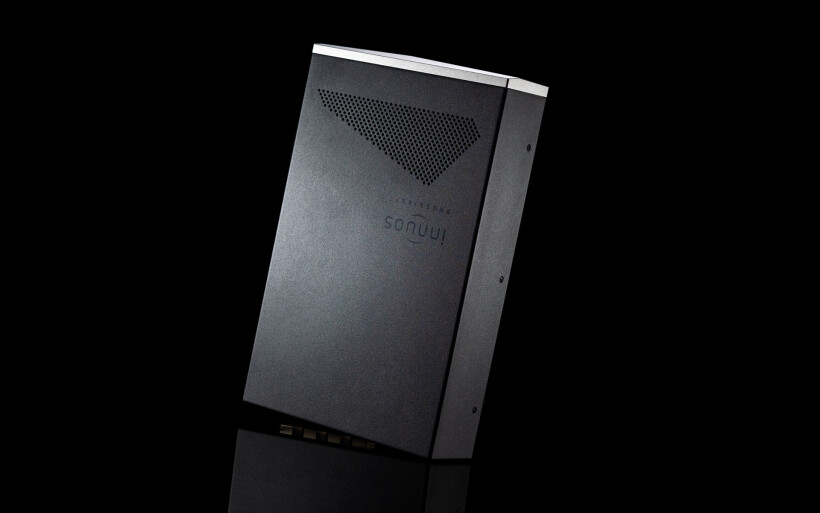 One doesn’t have to spend a lot on accessories to get better sound. Regular throwaway cables often get beaten to a pulp even by budget counterparts designed with audio in mind. A thick rug and some shelves busy with books just behind an audio rack will work wonders in highly reflective spaces. A €450 power strip will make a short work of a standard outlet multiplier from your local electronics store. The odds are that even a regular network switch used between a router and streamer will make a difference, especially for setups based on playback from a cloud. Listed measures honestly don’t have to be fancy to notice sonic progress. That said, the Fidelizer EtherStream priced at $395 when its review went live guarded my system from noise at a juncture that previously didn’t have any warden at all. As such it was a silly-good instantly appreciated investment into a rather costly platform I had back then.
One doesn’t have to spend a lot on accessories to get better sound. Regular throwaway cables often get beaten to a pulp even by budget counterparts designed with audio in mind. A thick rug and some shelves busy with books just behind an audio rack will work wonders in highly reflective spaces. A €450 power strip will make a short work of a standard outlet multiplier from your local electronics store. The odds are that even a regular network switch used between a router and streamer will make a difference, especially for setups based on playback from a cloud. Listed measures honestly don’t have to be fancy to notice sonic progress. That said, the Fidelizer EtherStream priced at $395 when its review went live guarded my system from noise at a juncture that previously didn’t have any warden at all. As such it was a silly-good instantly appreciated investment into a rather costly platform I had back then.
The question remains what happens when we invest several times more to go beyond fundamentals. It’s said that even then the law of diminishing returns exchanges significant expenses for tiny performance improvements at best. At the very pinnacle however this rule often doesn’t apply, or at least I don’t think it does. Today’s switch sells for about enough to position itself there and is meant for financially capable listeners who expect performance increase way above just basics. Since I’m not familiar with their audio I can’t possibly know whether they’ll be happy or not with this Innuos, but in my highly resolved setup it did significantly more than the Fidelizer. Not only this, I’d still consider the former a good ROI given that platform’s total value at its current state. A product’s price is a matter of perspective.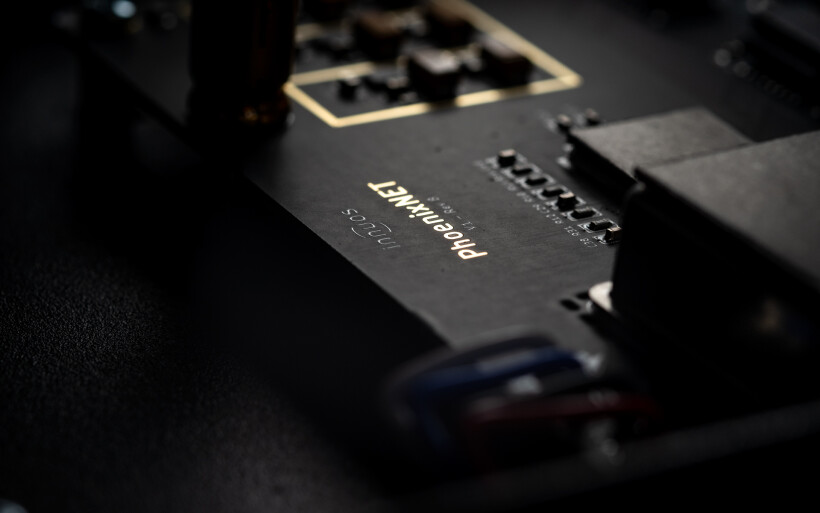 After reviewing several network devices designed for audio I had firm expectations about the Innuos’ input. Such products fundamentally reduce noise just as many USB sorters, power cables, juice bars, filters, mechanical decouplers etc. The less of that seeps into our setups, the better sound we get in return. Itchy highs, tonal paleness, imaging flatness, abnormally chiseled sound sources, resolution loss and audible grain are the well-known symptoms. In the Fidelizer review I wrote that devices such as this one normalize sonics; they take the edge off, improve clarity and resolution, increase color and background inkiness and expand soundstage to present it as a larger structurally more complex landscape. They also tighten up bass and turn sound sources into rounder heftier finer separated virtual shapes. The result at first often seems primarily dense, liquid, mild and a touch darkish. After a while it emerges as less nervous and more natural to the ear/brain, so more enjoyable. Although that was the common base both for the PhoenixNET and EtherStream, the former took a major leap forward from there on several rather important counts.
After reviewing several network devices designed for audio I had firm expectations about the Innuos’ input. Such products fundamentally reduce noise just as many USB sorters, power cables, juice bars, filters, mechanical decouplers etc. The less of that seeps into our setups, the better sound we get in return. Itchy highs, tonal paleness, imaging flatness, abnormally chiseled sound sources, resolution loss and audible grain are the well-known symptoms. In the Fidelizer review I wrote that devices such as this one normalize sonics; they take the edge off, improve clarity and resolution, increase color and background inkiness and expand soundstage to present it as a larger structurally more complex landscape. They also tighten up bass and turn sound sources into rounder heftier finer separated virtual shapes. The result at first often seems primarily dense, liquid, mild and a touch darkish. After a while it emerges as less nervous and more natural to the ear/brain, so more enjoyable. Although that was the common base both for the PhoenixNET and EtherStream, the former took a major leap forward from there on several rather important counts.
My setup with the Innuos sounded meatier, darker and rounder than with the Fidelizer, which wasn’t a surprise in the slightest. These sonic shifts had to be the effect of the former’s greater noise trimming potency, or at least that’s what I thought. Since I didn’t detect any losses on resolution, quickness or openness, my ears registered only improvements. Although naturally darker, the PhoenixNET injected extra weight into highs, extended their decay and magnified more dust particles suspended in air. It also rendered all critical aural shapes as more touchable and distinct. These now a bit taller frames were naturally closer to the listening chair and with layers just behind more visible as well. That sufficed to map the Portuguese as the one with the upper hand on immersion and all in all the higher-tiered performer by my standards, but its key assets were found elsewhere.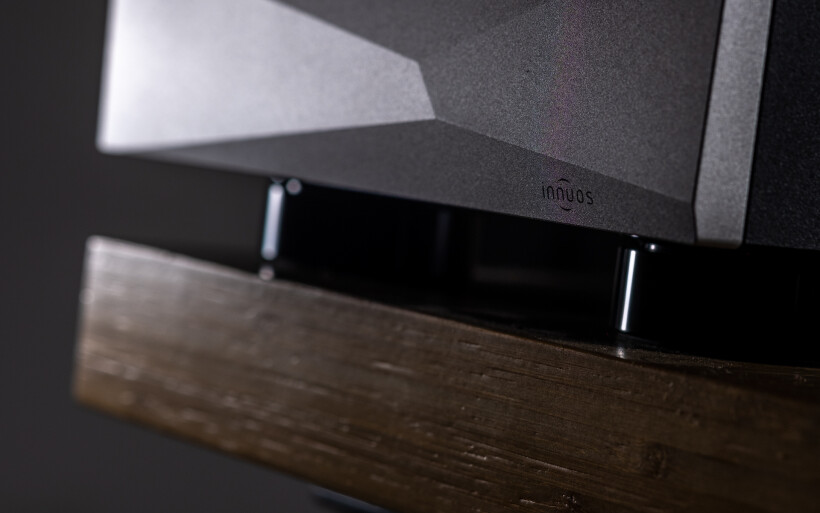 If one product’s voicing is perceived as dark, grounded and juicy, the other has to be more agile, illuminated and quicker in comparison. Although the PhoenixNET was tailored to fit the former profile, it wasn’t spatially constricted, slower or less radiant than the EtherStream. In these regards it did everything just as its sparring partner yet still clearly was the more muscular accelerated resolved type. Not only this, I’ve found the Innuos a highly energetic beast, even though its well-pronounced meaty a touch hooded core said otherwise at first. One of the fundamental differences between the two switches was in how each released all the energy embedded i.e. in rock recordings served at high SPL. Generously weighty elastic opening guitars on “Feel Good Hit Of The Summer” by Queens of the Stone Age and Grinderman’s “No Pussy Blues” are good examples. Here the difference between the Fidelizer and Innuos was clear as day. The former was perfectly fit for making these instruments properly anchored, substantial and palpable, while its opponent still had them sensibly beefier, more explosive, bolder and wilder. The resulting extra anger translated into a more enjoyable experience overall. The disparity on that front alone was enough to predict how this report’s fight was destined to go from this point onwards.
If one product’s voicing is perceived as dark, grounded and juicy, the other has to be more agile, illuminated and quicker in comparison. Although the PhoenixNET was tailored to fit the former profile, it wasn’t spatially constricted, slower or less radiant than the EtherStream. In these regards it did everything just as its sparring partner yet still clearly was the more muscular accelerated resolved type. Not only this, I’ve found the Innuos a highly energetic beast, even though its well-pronounced meaty a touch hooded core said otherwise at first. One of the fundamental differences between the two switches was in how each released all the energy embedded i.e. in rock recordings served at high SPL. Generously weighty elastic opening guitars on “Feel Good Hit Of The Summer” by Queens of the Stone Age and Grinderman’s “No Pussy Blues” are good examples. Here the difference between the Fidelizer and Innuos was clear as day. The former was perfectly fit for making these instruments properly anchored, substantial and palpable, while its opponent still had them sensibly beefier, more explosive, bolder and wilder. The resulting extra anger translated into a more enjoyable experience overall. The disparity on that front alone was enough to predict how this report’s fight was destined to go from this point onwards.
To confirm the observation above I cued up several bass-intense tracks and the outcome was as predicted. On such jobs the PhoenixNET dug deeper and was noticeably more controlling, ripped and snappier, to a point where the EtherStream felt a touch hollow, shaky, ethereal and less grounded in comparison. All that had a major impact on the well-known mods in my room. Eivør Pálsdóttir’s “Trøllabundin” with its large slow drum that overstays its welcome with most regularly vented speakers has been my reference point for several years now. With the Innuos I was able to increase volume on that specific recording as much as I pleased without any wobble at all. With the EtherStream I couldn’t. Just to be clear, the list of accessories which allowed me to do that in the past is disturbingly short. More importantly, I’ve found it very funny that a network switch used outside the audio path managed to follow suit on that score. Bravo.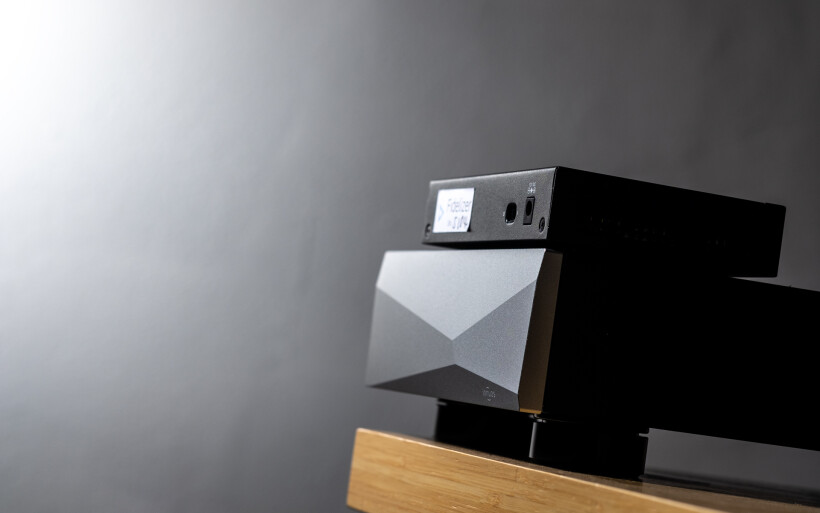 Although at that point it was clear how the PhoenixNET went about its business, some triangulations were still left on the to-do list. One day spent on auditions without any of the two switches engaged was a nice palate cleanser that proved highly useful in mapping their individual impact on my setup. That’s why these off-duty intervals were now in order after each product swap. This method on top of using just one contestant for a full day while the other rested allowed me to find out which one I missed more. After several on/off rotations as described, I was very happy about all the changes the EtherStream delivered. Long story short, I liked my setup’s sound a fair bit more when that switch was a part of it. Still, all the sonic reworks executed by the Innuos in my system were far more pronounced and accordingly audible. The difference between both switches on this specific score was the most striking of them all and also the very reason why I considered the PhoenixNET a higher-tiered specimen.
Although at that point it was clear how the PhoenixNET went about its business, some triangulations were still left on the to-do list. One day spent on auditions without any of the two switches engaged was a nice palate cleanser that proved highly useful in mapping their individual impact on my setup. That’s why these off-duty intervals were now in order after each product swap. This method on top of using just one contestant for a full day while the other rested allowed me to find out which one I missed more. After several on/off rotations as described, I was very happy about all the changes the EtherStream delivered. Long story short, I liked my setup’s sound a fair bit more when that switch was a part of it. Still, all the sonic reworks executed by the Innuos in my system were far more pronounced and accordingly audible. The difference between both switches on this specific score was the most striking of them all and also the very reason why I considered the PhoenixNET a higher-tiered specimen.
It’s not for me to say whether your ears would’ve fancied the EtherStream’s or Innuos’ profile more, but the latter’s potency struck me as its most prominent virtue by far. I also think that accessories as costly as this one should be immediately detectable and able to change a system’s sound by a lot. The PhoenixNET did exactly that, and as it turned out efficiently enough that the Fidelizer couldn’t keep up even fronted by ISOL-8 Prometheus. Upon including that linear PSU the performance gap between both switches had narrowed as expected, but the Portuguese was still noticeably ahead on color, muscle tissue, sensible power and wider contrast ratio. After that comparison I had all the intel to wrap this review.
Innuos PhoenixNET holds no jewelry status so won’t do any favors for your living room’s décor. It’s also not an ideal investment into affordable setups, which will benefit more from spending the extra €3’000 on better speakers, amp or DAC. Fully loaded six-figure streaming systems are a different story, however. Today’s Innuos will do an awful lot there and this is the target environment for it. That said, I was utterly surprised by how much additional performance this still compact modestly dressed box managed to squeeze from my own rig, just as its USB sibling more than two years ago. Let me stress that I’m fully aware that in theory network switches shouldn’t make any audible difference at all, but that’s just not my subjective experience. The way I see it, Innuos PhoenixNET fared brilliantly where it mattered most so did the exact opposite. That’s the takeaway and those who already consider such products meaningful will know what to do with it.
Associated Equipment:
- Amplifier: Trilogy 995R, FirstWatt F7, Enleum AMP-23R
- DAC: LampizatOr Pacific (KR Audio T-100 / Living Voice 300B + KR Audio 5U4G Ltd. Ed.)
- Speakers: Boenicke Audio W11 SE+, sound|kaos Vox 3afw
- Transport: Innuos Statement, fidata HFAS1-S10U
- Preamplifier: Trilogy 915R, Thöress DFP
- Speaker cables: Boenicke Audio S3, LessLoss C-MARC
- Headphones: HifiMan Susvara
- Speaker signal conditioning: LessLoss Firewall for Loudspeakers, Boenicke ComDev
- Anti-vibration conditioning: 12x Carbide Audio Carbide Bases (under DAC, preamp and speakers), 3x Bindbreakers (under LessLoss power bar)
- Interconnects: LessLoss Entropic Process C-MARC, Boenicke Audio IC3 CG
- Power components: LessLoss Power Distributor -> Boenicke Audio Power Gate, LessLoss C-MARC, LessLoss Entropic Process C-MARC, ISOL-8 Prometheus
- USB components: iFi audio Mercury3.0
- Rack: Franc Audio Accesories Wood Block Rack 1+3
- Network: Fidelizer EtherStream, Linksys WRT160N
- Music: NativeDSD
Retail prices of reviewed components in EU (incl. VAT):
- Innuos PhoenixNET: €3’099
Manufacturer: Innuos


